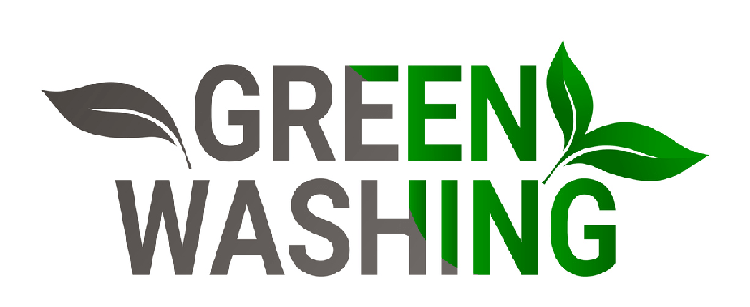Have you taken it upon yourself to make more planet-friendly purchases lately? Then you’ve probably heard the word “greenwashing.” But uncovering what greenwashing really is can be quite tricky. This deceptive marketing tactic can fool even the savviest of shoppers, so we’re diving into the facts that’ll help you identify and avoid it.
With the climate crisis upon us, more consumers than ever are thinking deeply about the impact of their purchases. In fact, recent studies show that 78% of Americans are more likely to purchase a product if it’s labeled as “environmentally friendly.” This move towards sustainability is great news for the planet. Right?
Unfortunately, many less-than-moral business have learned that customers prefer “green” products. And that they’ll pay more for them.
The result? Greenwashing. And although it might look “environmentally friendly”– looks can be deceiving.
What is greenwashing?
Have you ever purchased a product that claimed to be (or looked like it was) eco-friendly, and then later found out that its advertised “green” attributes weren’t real? That’s greenwashing.
Greenwashing is a deceptive marketing tactic in which misleading claims or tactics are used to advertise products as more environmentally friendly than they are.
The seven “sins” of greenwashing
While greenwashing has been getting more press lately, it has been around for quite some time. In 2007, in an attempt to better identify greenwashing tactics, the “sins of greenwashing” were written up. Understanding these common forms of greenwashing can help you spot it in action, and steer clear.
Hidden Trade-Offs
When a product is marketed as “green” based on a small set of factors (like recycled plastic packaging), but it ignores bigger environmental issues (such as harmful chemicals in the product), this is a sign of hidden trade-offs.
No Proof
When an eco-friendly claim is made without a third-party certification or verification, it’s nearly impossible to verify the truth of the claim. Under the surface, these claims are often false or inflated.
Vagueness
Words like “all-natural” or “bio” are vague and often misunderstood. For example, many substances (like mercury) are “natural” but they’re also poisonous! Watch out for nonspecific words like these.
Worshipping False Labels
Often, greenwashed products feature fake labels that mimic third-party certification, but no certification exists. Labels that claim things like “100% natural” or “guaranteed bio” are common examples of false labels.
Irrelevance
This sin is seen when products are marketed for a “green” attribute that is no longer relevant. For example, many non-stick cookware brands will market their produts as "PFOA-free" or "PFOS-free." However, these harmful chemicals have been removed from cookware production since 2016.
Lesser Of Two Evils
This greenwashing “sin” is found in many of the least-green product categories. A “fuel-efficient” car might be marketed as eco-friendly. But it’s still running off of fossil fuels.
Fibbing
Some environmental claims that are made are simply not true. For example, business might claim that they are carbon neutral, but the reality may be far from that.
A greenwashing example that’s all-too familiar
So, what does greenwashing look like in real life? Here’s a greenwashing example that you’ve probably seen. Picture this: you’re wandering the aisle of your local grocery store, looking for an eco-friendly cleaning product. You spot one with a neutral, earth-toned label that says its packaging is made from 100% recycled content. That sounds like a sustainable product, right?
However, upon further research, you find that the product itself is made with a host of toxic chemicals. So, while this product is packaged in a seemingly “sustainable” way, what’s inside is damaging to the planet (and to your own health).
Why Does Greenwashing Work?
Because the majority of the population prefers to support businesses that are environmentally conscious, it’s natural for us to look for products that are “green.” And marketers are smart. They know that most consumers simply don’t have time to deep-dive into their business practices. So it’s easy for them to make eco-claims without making the real environmental change needed. For companies big and small, greenwashing their products is insanely profitable– and that profit comes with a real toll on the planet.
The True Cost Of False Marketing: Greenwashing Statistics
Greenwashing is even more common than you might think. In the United States, 68% of corporate executives will even admit that their businesses practice deceptive greenwashing tactics. And while many big companies make the news for greenwashing, small, local businesses often practice these tactics, too.
For example, recently Starbucks released a new “straw-less” lid, aimed at eliminating the need for plastic straws. After their new green change made headlines, Starbucks stock rose by nearly 2% overnight. What they failed to mention? The new lid uses more plastic than their old straw and lid combined.
But when it comes to a local coffee shop, common signs of greenwashing are often apparent, too. While a small shop might market their locally roasted coffee beans, it’s often unclear where their coffee comes from, and how it’s grown. So, while a local coffee joint might appear like a “green choice” their supply chain might actually support coffee grown with dangerous pesticides.
Is greenwashing illegal?
There’s no doubt that greenwashing is deceptive, but right now, there are no laws in place that make greenwashing explicitly illegal. Why? Because it’s easy for brands to “suggest” or overshoot their green initiatives without outright lying about them. While greenwashing claims can become lawsuits as a matter of false advertising, they rarely have been. However, new lawsuits against fast-fashion brands are suggesting that stricter regulations for greenwashing are coming. And, new watchdog websites are also stepping up to hold businesses accountable for their greenwashing ways.
Don’t Fall For It: How To Avoid Greenwashing
It never feels good to find out you didn’t get what you thought you paid for. And it’s even worse when your purchase was motivated by a genuine desire to do good for the planet. To make sure your next purchase really is green, learn how to spot greenwashing in action.
How do you identify greenwashing?
Greenwashing can be subtle and tricky, but there are few tell-tale signs of a “greenwashed” product:
- The label uses neutral colors like green and brown, or imagery of plants and leaves, but nothing on the product label proves its sustainable ingredients or benefits
- The product features wording like “natural,” “eco-friendly,” or “green,” but it’s missing third-party certifications like USDA organic, USDA BioPreferred, or Leaping Bunny Certified.
- A company offers broad, non-specific claims of its green initiatives, but there’s no proof of their progress or commitment.
This chart is helpful to identify trustworthy certifications, and common misleading symbols.

4 Tips To Help You Steer Clear of Greenwashing
1. Look beyond the packaging
One of easiest (and cheapest) ways to falsely green a product is through its packaging. Avoid choosing a product based on how “green” it looks compared to others. Take a moment to read the product information before making a purchase. If “99% recycled packaging” is the only planet-friendly claim you find, keep searching for a better product.
2. Research the company
Not familiar with the brand? Do a quick search on the internet with their name. Do they have any greenwashing claims against them? Then, check out their website. Do they have a sustainability page? Is the product you’re looking at part of a “green” or “conscious” collection, or is their entire brand held to planet-friendly standards? If you can’t find clear information about their stance on the environment, only a percentage of their brand is “green,” or if they have claims against them, it’s likely greenwashing.
3. Expect specifics
Just what does “clear information” look like? We’re glad you asked. A truly sustainable brand will have specific facts and figures to back up their sustainability initiatives. This could look like a carbon neutral shipping promise, backed by a partnership with CarbonFund or Climate Neutral. Another specific to look for is third-party certifications, like USDA Organic or BioPreferred. Certifications like these require thorough vetting and testing, and they can’t be faked.
When it comes to specifics, look for B Corp certified businesses. While B Corps aren’t always eco-friendly companies, they are held to an extremely high level of transparency and rigorous scrutiny. When a B Corp certified business shares their “clear information” you can rest assured that it’s been fact checked for honesty.
4. Use trusted marketplaces to find sustainable alternatives
Is greenwashing still getting the best of you? Use a platform like GoodOnYou to find clothing that’s rated for its sustainability. And when it comes to home goods, online marketplaces such as EarthHero and Thrive only sell products that have been vetted for their eco-friendly production process, ingredients, packaging, and more. If you’re just dipping your toes into sustainable swaps, try out Mighty Nest. They offer a monthly subscription of certified green products, so you can be introduced to new, sure-to-be sustainable options. With tools like these, you can shop safely knowing that there’s are no greenwashing allowed.
Looking for more ways to spend aligned with your values? Discover what it means to be a conscious consumer. Then...get the kids in your life excited about going green with the Kids Carbon Almanac.





